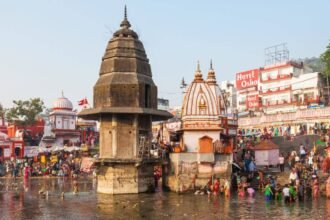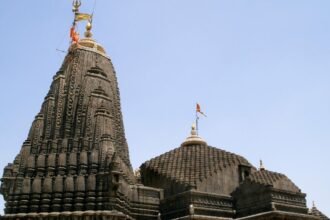Understanding the Kumbh Mela: Its Origins, Meaning, and the Cycle of the 12-Year Interval
One of the most important religious and cultural occasions in the world, the Kumbh Mela attracts millions of pilgrims and tourists from all over the world. However, why does the Kumbh Mela occur every 12 years and what is it exactly? This blog will examine the history, significance, and intriguing causes of this momentous occasion that never fails to enthral people throughout the globe.
The Kumbh Mela’s History
The Kumbh Mela has its roots in Hindu mythology, particularly in the story of Samudra Manthan, the ocean’s churning. This ancient tale states that in order to obtain amrita, the nectar of immortality, gods and demons churned the ocean. Prayagraj, Haridwar, Nashik, and Ujjain are the four Indian locales where the nectar overflowed during this churning process. Over time, these sites—which were revered—became the main venues for the Kumbh Mela festivities.
Mela denotes a meeting or fair, and Kumbh denotes a container (Kumbh) that held the nectar. As a result, Kumbh Mela represents a celebration to honour the reverence of these sites where it was thought that the divine nectar fell.
The Kumbh Mela’s Significance
In addition to being a religious occasion, the Kumbh Mela is a spiritual phenomenon with profound Hinduism. Pilgrims think they can cleanse their souls and atone for their sins by taking part in the Mela, particularly by bathing in the sacred rivers at the appointed spots. Bathing during the Mela is thought to have spiritual advantages, including obtaining moksha (freedom from the cycle of birth and death), and the water is thought to have divine properties.
It’s also a time for introspection, when saints, ascetics, and devotees gather to ponder, have spiritual conversations, and carry out holy rites. By bridging social, cultural, and geographic divides, the Kumbh Mela promotes unity.
The Reasons Behind the Annual Kumbh Mela
Since the Kumbh Mela is linked to the astronomical cycle, it is celebrated every 12 years. An auspicious moment for the Mela is when the positions of the planets, especially the Sun, Moon, and Jupiter, align in a precise configuration once every 12 years, according to Hindu astrology. It is believed that this alignment strengthens the rivers’ spiritual force, increasing the potency of the holy plunge.
Also Read : The Ultimate Guide to the Maha Kumbh Mela: Dates, Venue, and Rituals
The festival moves back and forth between four main venues:
Prayagraj (where the Yamuna, Ganga, and the fabled Saraswati meet)
On the banks of the Ganga, at Haridwar
Ujjain (on the Shipra River) and Nashik (on the Godavari River)
Every one of these places is revered, and the river in each city is thought to possess supernatural attributes that aid in atoning for the sins of followers. The 12-year gap represents the celestial alignment’s periodicity, which is said to heighten the event’s spiritual importance.
The Kumbh Mela Rituals
The Shahi Snan (Royal Bath), one of the main ceremonies of the Kumbh Mela, is well-known. In order to take a ceremonial bath, pilgrims, saints, and sadhus (holy men) assemble at the riverbanks in a spectacular procession. Devotees think they can atone for their sins during the Shahi Snan, which is regarded as the most auspicious time.
The following are additional Mela customs: Puja (ritual worship) at holy altars besides the river.
Yajnas, or fire rites, are performed to ask the gods for benefits.
Respected spiritual gurus conduct Satsangs, or spiritual meetings, where they teach about subjects including dharma (righteousness), karma (activity), and moksha (liberation).
The Mela is a colourful celebration of India’s cultural legacy in addition to being a time for rituals. The festival is a multisensory experience that provides spiritual and cultural enrichment, featuring traditional music, dance, and regional performances.
Kumbh Mela’s Global Impact
Despite being a Hindu religious event, the Kumbh Mela has significance that goes well beyond India. It is now a universal representation of harmony, spirituality, and cross-cultural interaction. The Mela attracts thousands of foreign visitors who are captivated by its size, customs, and the chance to see one of the biggest crowds in the world. With efforts to make the festival more sustainable, such as trash management and eco-friendly methods, the Mela has also drawn notice for its environmental conscience.
The Kumbh Mela serves as a reminder of the strength of group religion and the universal spiritual experience that surpasses all distinctions in a society where boundaries frequently separate people.








